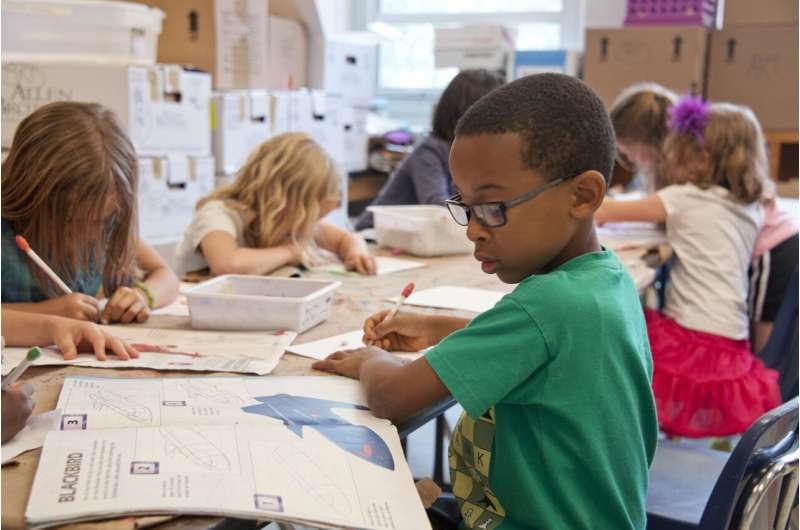Bilingual children with special educational needs may be missing out on support in England

English isn't the first language of over in schools in England, and this proportion is rising. The children in this group who also have special educational needs or disabilities may be falling through the cracks, missing out on support that would help them succeed.
analyzed data from 2.5 million English primary school pupils. The findings show that bilingual learners with special educational needs especially struggle with reading. They trail behind both their peers without special educational needs, and other children with special educational needs who speak English as their first language.
When a pupil has a special educational need such as specific learning difficulties or autism, their language hurdles can make it harder to see the real cause of their challenges. Sometimes, a child's limited English . Other times, disabilities may be confused with . This confusion can delay the help they need.
Reading is particularly a problem because strong vocabulary and language-processing skills are needed, and the extra task of learning English can slow them down in this area. Math may rely less on advanced English, so the gap is often smaller in that subject.
that if bilingual pupils with special educational needs get strong support in the early years, they can catch up significantly.
The right support
One useful method is . This means teachers and special needs coordinators regularly track progress in reading, writing or math. For example, teachers might assess oral reading fluency or brief writing samples to measure progress. By spotting which pupils are falling behind, they can provide small-group tutoring, phonics help or targeted vocabulary lessons.
Pupils also benefit from clear, structured lessons that focus on reading and writing. They may also need extra time to practice and may learn better if the same vocabulary is taught in different ways, such as through games or acting.
In addition, research shows that when teachers use examples or stories that reflect different languages and cultures, pupils . This "" teaching boosts children's language skills.
For example, a on culturally responsive teaching for bilingual learners with disabilities has shown that connecting lessons to students' own cultural and linguistic backgrounds can boost both their language skills and their reading comprehension.
The teacher in the study combined explicit instruction—such as teaching vocabulary or grammar—with discussions in small groups that drew on experiences from the students' own lives. Her pupils saw significant improvements in literacy that underscores how culturally responsive methods can help bilingual children succeed.
Room for improvement
Another way to improve the situation for these children would be better assessments of whether they need additional support.
with colleagues has found that most bilingual pupils in England are not assessed for dyslexia in their first language, which can mask their true skills and needs. If schools allow pupils to be tested in their home language, or at least use bilingual materials, they can get a clearer picture of each pupil's progress.
Funding for specialized training is also needed. Schools need resources to hire or develop experts who understand both language learning and disabilities. Educational psychologists, for instance, or English-as-a-second-language teachers with expertise in special educational needs, can provide this much-needed support.
Ofsted inspectors should also check how schools use regular progress monitoring data to adjust teaching for bilingual pupils with special educational needs. If data use becomes a core part of good practice, more schools may be inspired to invest in it.
The evidence shows many bilingual learners with special educational needs , or even surpass their peers, if they receive the right support early on. Yet too often, these children are seen only as "language learners," with their , or they are treated as having a disability, while their language needs get ignored.
We already know strategies that work. By using detailed progress tracking, culturally responsive teaching, and targeted language instruction, schools can close the gap and make sure bilingual pupils with special educational needs and disabilities do not fall behind.
Provided by The Conversation
This article is republished from under a Creative Commons license. Read the .![]()




















